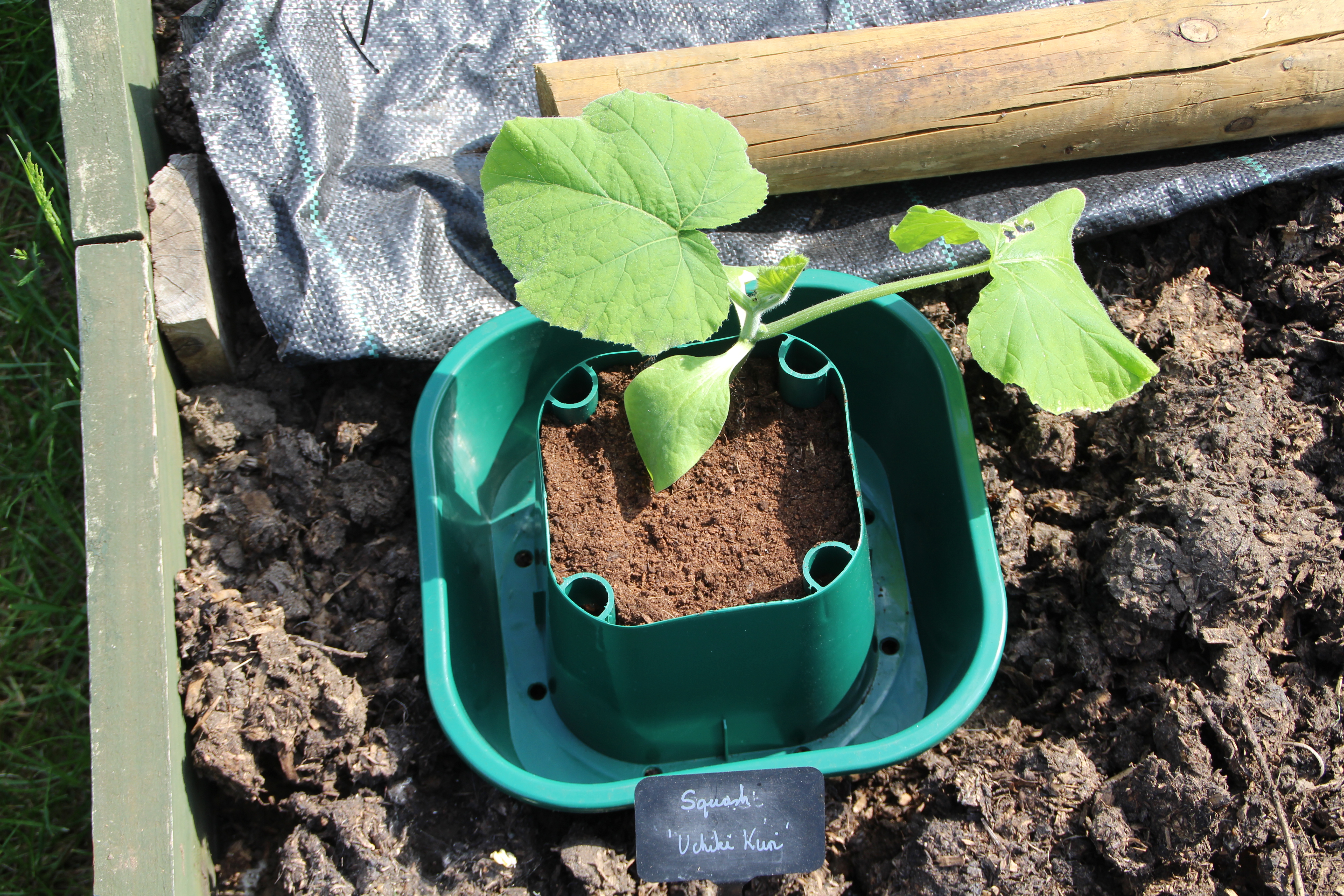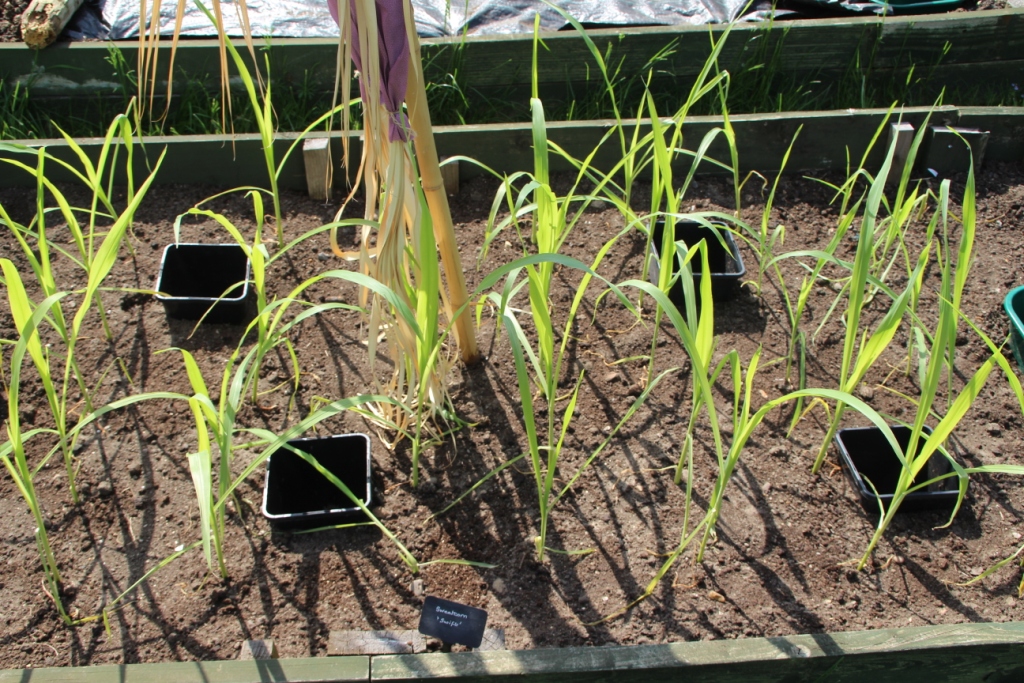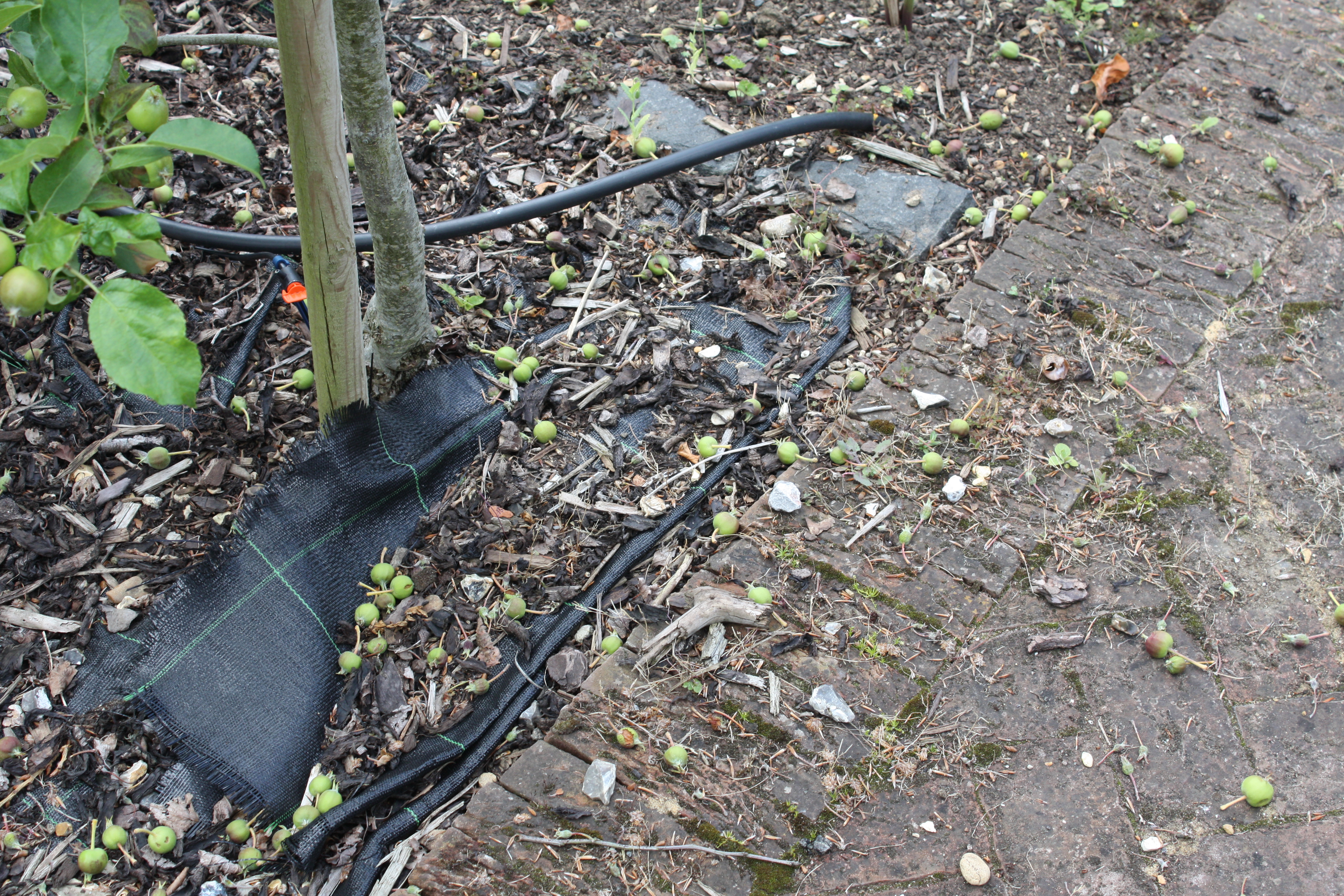By the start of June all your plants for this year’s show will probably be planted up, so this month’s priority is maintaining plant health.
Observation underpins all integrated pest management strategies and helps you to catch problems early, so keep an eye out for things like holes in leaves and distorted growing tips that are indicators that pests are around even if you haven’t seen the little critters themselves. Strong plants are better equipped to fight off pests and diseases so watering and feeding will now be important.
If recent summers are any guide, it will be necessary to water the thirstier crops. Do remember that water is required at the roots, simply wetting the surface doesn’t get water where you need it and can be counter-productive as it will encourage weed seeds to germinate. Using watering systems that deliver the water underground are much better than spraying a hosepipe around. In most vegetable plots a full underground irrigation system is unlikely to be a practical option, but there are simple ways to get water below ground level. The “Rolls-Royce” option is probably using Gro-Pots, but simply sinking a 2 litre flower pot into the ground next to a tomato, squash or courgette will help to get plenty of water straight down to the developing root system.
Root seedlings (parnsips and carrots) need a little bit of water to get them established, but once they are growing try to avoid too much watering as you really want the roots to be driving down searching for water.
As well as water many plants will also require feeding. We tend to push fruit and vegetables quite hard to get them to crop in a short window, so they will need a bit of extra help. For leafy crops a general feed will work well, but for fruiting crops (tomatoes etc.) June is the time to switch to a high potassium feed to encourage flower and fruit formation.
Keep pinching out the shoots growing from the axils of the main stem on tomatoes to ensure that you have one solid stem transporting water and nutrients to the swelling fruit. Similarly if you are growing a giant pumpkin, pinch out all tendrils, side shoots and flowers until you have a long, strong main stem (4-5 metres if you have the space) before allowing just one fruit to develop.
After the normal “June drop” thin out the fruit on apples and pears even further. Thinning out will give you much better quality fruit and reduce the risk of diseases (such as brown rot) which can be spread by overcrowding. This will give fruit that are better for eating and storing as well as showing!



